In the fast-paced world of customer service, optimizing inbound calls is essential for delivering a superior customer experience. For businesses like Rapid Growth Company, the way inbound calls are handled can significantly impact customer satisfaction and loyalty. By implementing effective strategies for managing contact center inbound operations, companies can ensure that every customer interaction is positive and productive. This article explores the best practices for optimizing inbound calls and provides insights into how to enhance the customer experience through efficient call management.
What’s the Difference Between Inbound and Outbound Calls?
Understanding the difference between inbound and outbound calls is crucial for any business looking to optimize its customer service strategy. Inbound calls are initiated by the customer, typically when they have a question, need assistance, or want to make a purchase. These calls are often driven by the customer’s existing interest in the company’s products or services. In contrast, outbound calls are initiated by the company’s sales or support team, usually to reach out to potential customers, follow up on leads, or conduct surveys.
Inbound calls are reactive, meaning the company responds to the customer’s needs as they arise. This makes inbound calls a critical touchpoint in the customer journey, as the interaction is driven by the customer’s intent to engage with the business. Outbound calls, on the other hand, are proactive and are often used to generate new leads or re-engage existing customers. Both inbound and outbound calls play important roles, but optimizing inbound calls requires a focus on responsiveness, accuracy, and customer satisfaction.
The Importance of Optimizing Inbound Calls
For companies like Rapid Growth Company, optimizing inbound calls is not just about improving efficiency—it’s about enhancing the overall customer experience. When customers reach out through contact center inbound channels, they expect quick, helpful, and personalized responses. How well these expectations are met can determine the success of the interaction and, ultimately, the customer’s perception of the brand.
Optimizing inbound calls involves several key strategies. First, ensuring that the call center inbound calls are answered promptly and professionally is crucial. This can be achieved by training agents to handle calls effectively and using technology to manage call flow and reduce wait times. Additionally, providing agents with the tools and information they need to resolve issues on the first call can greatly enhance customer satisfaction.
How to Answer an Inbound Call?
Answering an inbound call may seem straightforward, but doing it correctly requires skill and preparation. At Rapid Growth Company, the approach to handling inbound calls is centered around three core principles: professionalism, empathy, and efficiency.
1. Greet the Customer Warmly: The first few seconds of an inbound call are critical. A warm, friendly greeting sets the tone for the entire conversation. Agents should introduce themselves and the company, ensuring that the customer feels valued and respected. For example, “Thank you for calling Rapid Growth Company. My name is [Agent’s Name]. How can I assist you today?”
2. Listen Actively: Active listening is key to understanding the customer’s needs. Agents should allow the customer to explain their issue or inquiry without interruption, showing empathy and understanding throughout. This not only helps in identifying the problem but also builds trust and rapport with the customer.
3. Provide Clear and Concise Information: Once the customer’s needs are understood, the agent should provide clear, concise, and accurate information. Whether it’s answering a question, providing guidance, or resolving an issue, the agent’s response should be tailored to the customer’s specific situation. This is where the efficiency of contact center inbound operations plays a crucial role.
4. Confirm Resolution: Before ending the call, it’s important to confirm that the customer’s issue has been resolved to their satisfaction. This step reassures the customer that their concerns have been fully addressed and reduces the likelihood of follow-up calls. For instance, the agent might say, “I’m glad we could resolve your issue today. Is there anything else I can assist you with?”
5. End the Call on a Positive Note: Ending the call with a positive, polite closing leaves a lasting impression. Agents should thank the customer for their call and encourage them to reach out again if needed. For example, “Thank you for calling Rapid Growth Company. Have a great day!”
Best Practices for Optimizing Inbound Calls
Optimizing inbound calls involves more than just answering the phone promptly. It requires a comprehensive approach that includes training, technology, and continuous improvement. Here are some best practices that companies like Rapid Growth Company can implement to optimize their inbound call processes:
1. Invest in Agent Training: Regular training ensures that agents are equipped with the skills needed to handle inbound calls effectively. This includes training on communication skills, product knowledge, and problem-solving techniques.
2. Leverage Technology: Advanced contact center inbound solutions can streamline call handling, reduce wait times, and improve overall efficiency. Tools such as interactive voice response (IVR) systems, customer relationship management (CRM) software, and call analytics can greatly enhance the performance of a call center inbound operation.
3. Monitor and Improve: Continuous monitoring of call center inbound calls allows companies to identify areas for improvement. By analyzing call data and customer feedback, Rapid Growth Company can refine its processes and ensure that every customer interaction is optimized for the best possible experience.
4. Focus on First-Call Resolution: Resolving the customer’s issue during the first call is a key indicator of a well-optimized inbound call strategy. This not only improves customer satisfaction but also reduces the overall workload on the contact center.
5. Personalize the Experience: Personalization is increasingly important in today’s customer service landscape. Agents should be encouraged to use the customer’s name, reference past interactions, and tailor their responses to the individual’s needs. This helps create a more meaningful and engaging experience for the customer.
Optimizing inbound calls is essential for providing an exceptional customer experience and building long-term customer loyalty. For companies like Rapid Growth Company, the benefits of investing in contact center inbound solutions and best practices are clear: increased customer satisfaction, improved efficiency, and a stronger brand reputation.
By focusing on professionalism, empathy, and efficiency, and by leveraging the right tools and technologies, businesses can ensure that every inbound call is a positive and productive experience for the customer. In a competitive marketplace, the ability to optimize inbound calls can be a significant differentiator, helping companies like Rapid Growth Company achieve their growth objectives and maintain a loyal customer base.
In conclusion, whether you’re handling a few calls a day or managing a large-scale call center inbound operation, the principles and strategies outlined here can help you optimize your inbound calls for better customer experience. By doing so, you’ll not only meet but exceed customer expectations, leading to greater success for your business.


